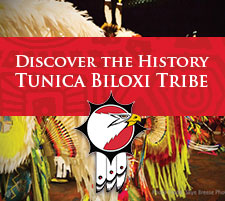Maximizing a Native American nation's political capital and political resources involves a combination of strategic planning, community engagement, effective communication, and building strong alliances. Here's a guide on how to achieve this:
Define Clear Objectives
Identify specific goals and priorities that align with the interests and needs of the Native American nation. Whether it's sovereignty, land rights, economic development, education, or cultural preservation, having clear objectives is crucial.
Empower and Educate the Community
Inform and involve the community in decision-making processes. Hosting town hall meetings, workshops, and educational events can help ensure that the community's voices are heard and that everyone is informed about key issues.
Cultivate Leadership
Identify and empower leaders within the community who can effectively represent the nation's interests. Strong leadership helps garner support from the community and assists in navigating complex political landscapes.
Build Alliances and Networks
Forge alliances/strategic partnerships with other Native American nations, advocacy groups, and organizations that share similar goals. Collaborative efforts can amplify your political influence and resources. These collaborations can also allow you to create a strong and unified vision and mission among your shared interest groups.
Lobbying and Advocacy
Engage in lobbying and advocacy efforts to promote policies that benefit the Native Nation. This may involve working with lawmakers, government agencies, and non-governmental organizations to advance your agenda.
Effective Communication
Craft clear and compelling messages to convey your nation's values, goals, and needs. Utilize various communication channels, including traditional media, social media, and community platforms.
Cultural Preservation and Promotion
Embrace and promote the Native American Nation's cultural heritage. This not only strengthens the community's identity but also attracts support from other individuals and organizations (both tribal and non-tribal) sympathetic to cultural preservation efforts.
Strategic Resource Allocation
Allocate resources wisely, focusing on projects and initiatives that align with your goals. Consider sustainable economic development projects that generate revenue and create jobs. The more you can utilize your resources to create economic, financial, and workforce opportunities, the more political and communal leverage you will create.
Education and Outreach
Educate the broader public about the history, challenges, and contributions of Native American nations. Fostering understanding can garner public support for your political efforts. Oftentimes, there are many serious issues being tackled in the political realm of society, but the lack of garnered support often comes from a lack of awareness and knowledge around the issues.
Engage in Legal Action When Necessary
When faced with challenges related to land rights, treaty issues, or other legal matters, consider seeking legal recourse. Engaging legal experts can help protect your nation's rights.
Participate in Regional and National Initiatives
Engage with regional and national Native American and non-Native American organizations to amplify your voice and access resources, support, and opportunities on a broader scale.
Long-Term Planning
Develop long-term strategies that consider the evolving political landscape and address both immediate and future challenges. Position your nation to be non-bi-partisan as that will allow you to create more fruitful partnerships and align your strategies with what is best for the tribal nation rather than solely the principles of the governing political party.
Transparency and Accountability
Maintain transparency in your decision-making processes and financial management. Demonstrating accountability helps build trust within and outside the community.
Youth Involvement
Involve young members of the community in political activities, ensuring that future generations continue to advocate for the nation's interests. By doing so, you also allow for clear feedback from the younger generation based on trends that they may see and that you may not necessarily be subjected to as it correlates to age-based gaps.
Adapt and Learn
Be open to adapting your strategies based on feedback, results, and changing circumstances. Flexibility is key to maintaining relevance and effectiveness.
Remember that building and maximizing political capital and resources is a continuous effort that requires the commitment and collaboration of the entire community. By strategically leveraging these assets, Native American nations can work towards achieving their goals and securing a brighter future for generations to come.








